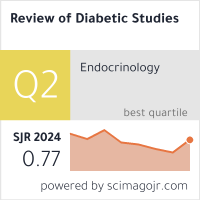Proteinuria And Thrombocytopenia As Early Predictors Of Acute Kidney Injury In Snake Bite
DOI:
https://doi.org/10.1900/cc95qp72Keywords:
Snake Bite, AKI, thrombocytopenia, proteinuria.Abstract
Background:
Snake bite is an important public health concern in developing countries. In India it is estimated that 45900 deaths occur annually due to snake bite. Various studies done have shown conflicting views on the importance of proteinuria and thrombocytopenia in venomous snake bites. Hence, this study intends to study proteinuria and thrombocytopenia and assess whether it can serve as a reliable early indicator of acute kidney injury in snake bite.
Objective of the study:
In this study the value of the proteinuria and thrombocytopenia shall be studied as early predictors of acute kidney injury in snake bite.
Methodology:
A prospective clinical study of 35 patients of snake bite was done to know the clinical profile and outcome at SNMC and HSK HOSPITAL BAGALKOT and particularly looked for development of acute renal failure. A detailed clinical examination was conducted on all the patients. A detailed hematological investigation was done, which includes Hb%, TC, DC, BT, CT, and PT . Urine analysis was done for identifying microalbuminuria. Renal function tests were also done. Patients were followed up till discharge or death. They were treated as per protocol. Clinical data was tabulated. Statistical analysis was done.
Results:
Thrombocytopenia and albuminuria, which is to be considered as the major early marker for acute kidney injury among snakebite patients was found to be present in 92% and 100% in our patients with AKI whereas it was only 22% and 61% respectively among the patients without AKI and the difference was found to be statistically significant (p<.01). The survival rate was higher among the patients without AKI when compared to the patients with AKI and the difference is statistically significant (p<.05).
Interpretation and conclusion-
Cause of AKI in snakebite was multifactorial in origin. Early detection of AKI due to snakebite should be assessed by testing for the platelet count and the urine albumin at the time of admission and appropriate treatment for it would help to reduce the mortality significantly.
Downloads
Published
Issue
Section
License

This work is licensed under a Creative Commons Attribution-ShareAlike 4.0 International License.


